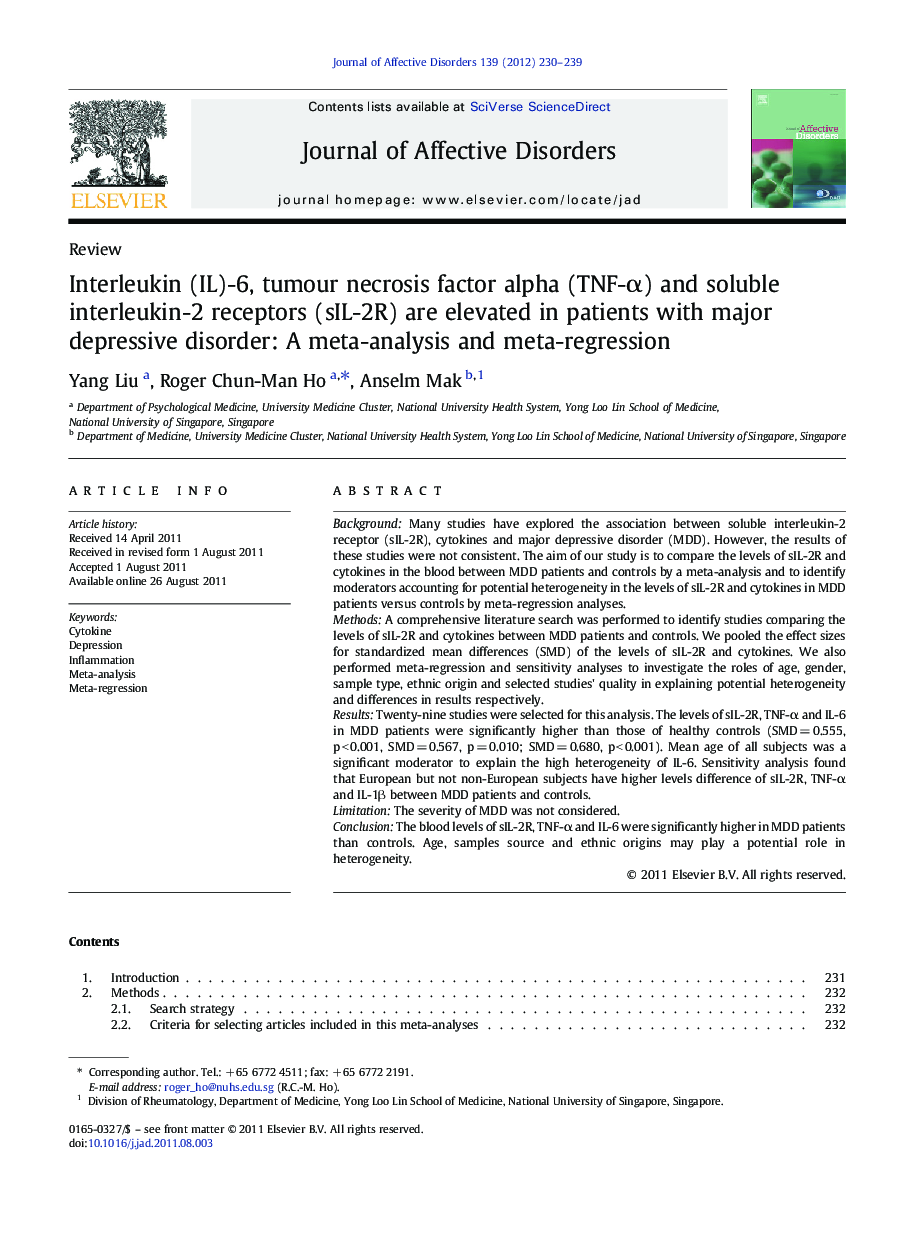| Article ID | Journal | Published Year | Pages | File Type |
|---|---|---|---|---|
| 4186353 | Journal of Affective Disorders | 2012 | 10 Pages |
BackgroundMany studies have explored the association between soluble interleukin-2 receptor (sIL-2R), cytokines and major depressive disorder (MDD). However, the results of these studies were not consistent. The aim of our study is to compare the levels of sIL-2R and cytokines in the blood between MDD patients and controls by a meta-analysis and to identify moderators accounting for potential heterogeneity in the levels of sIL-2R and cytokines in MDD patients versus controls by meta-regression analyses.MethodsA comprehensive literature search was performed to identify studies comparing the levels of sIL-2R and cytokines between MDD patients and controls. We pooled the effect sizes for standardized mean differences (SMD) of the levels of sIL-2R and cytokines. We also performed meta-regression and sensitivity analyses to investigate the roles of age, gender, sample type, ethnic origin and selected studies' quality in explaining potential heterogeneity and differences in results respectively.ResultsTwenty-nine studies were selected for this analysis. The levels of sIL-2R, TNF-α and IL-6 in MDD patients were significantly higher than those of healthy controls (SMD = 0.555, p < 0.001, SMD = 0.567, p = 0.010; SMD = 0.680, p < 0.001). Mean age of all subjects was a significant moderator to explain the high heterogeneity of IL-6. Sensitivity analysis found that European but not non-European subjects have higher levels difference of sIL-2R, TNF-α and IL-1β between MDD patients and controls.LimitationThe severity of MDD was not considered.ConclusionThe blood levels of sIL-2R, TNF-α and IL-6 were significantly higher in MDD patients than controls. Age, samples source and ethnic origins may play a potential role in heterogeneity.
